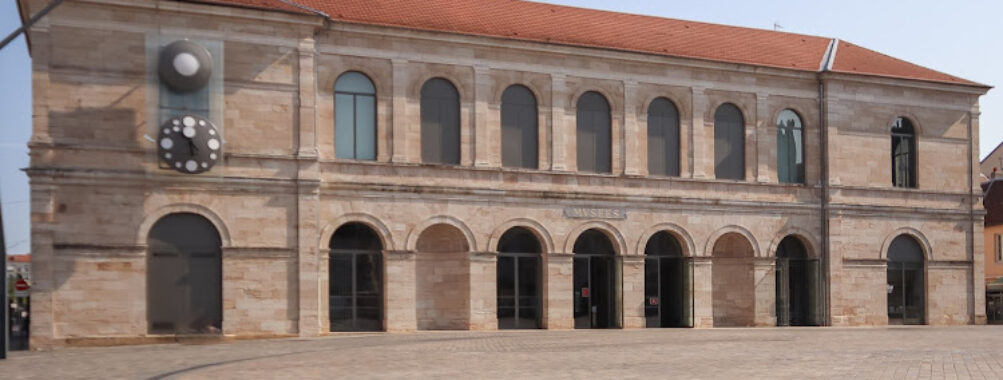
Museum of Fine Arts and Archeology of Besançon
Table of Contents
Description
The Museum of Fine Arts and Archeology of Besançon is one of those places that feels like stepping into a layered storybook, where every turn of the hallway reveals a new chapter. Established in 1694, it holds the honor of being the oldest public museum in France, even predating the Louvre. That fact alone gives it a kind of gravitas, but what’s really striking is how the institution blends its dual identity: part archaeological treasure trove, part fine arts gallery. Walking through, you’ll notice how the building itself reflects this duality—one wing steeped in history with its granary origins, the other a more modern concrete structure that echoes Le Corbusier’s “museum of unlimited growth” concept. It’s a little quirky, but in a way that makes you pause and think about how architecture can tell its own story alongside the exhibits.
The collections are vast and surprisingly eclectic. On one side, you’ll find artifacts unearthed from ancient civilizations, from Greek ceramics to Roman sculptures, each piece pulling you into a different era. On the other, the fine arts section rolls out an impressive lineup of paintings and sculptures, with names like Rubens, Goya, and Picasso standing tall alongside regional artists who give the museum a more intimate, local flavor. And honestly, that’s what makes it feel special—it’s not just about the big names, but also about the way the museum honors its own roots in Besançon.
Now, I’ll be honest: not every corner of the museum feels perfectly polished. Some displays feel a bit dated, and the layout can feel like a maze. But that’s also part of its charm. If you’re the type who enjoys wandering without a strict plan, you’ll probably love the labyrinthine design. Families tend to enjoy it too, since it’s not overwhelming in size, and the accessibility features—like wheelchair-friendly entrances and restrooms—make it welcoming to a wide range of visitors. Overall, the museum strikes a balance between being a serious cultural institution and a place where you can just casually explore without feeling pressured to “get” everything.
Key Features
- Founded in 1694, making it the oldest public museum in France
- Blends archaeology and fine arts collections under one roof
- Architecture combines a 19th-century granary with a bold concrete structure inspired by Le Corbusier
- Artwork by masters like Goya, Rubens, and Picasso alongside regional artists
- Extensive archaeological artifacts from ancient Greece, Rome, and Egypt
- Wheelchair accessible entrances, restrooms, and parking
- Good for families and kids with engaging displays
- Paid parking nearby for convenience
Best Time to Visit
If you’re planning a trip, timing can really shape your experience. Weekday mornings are generally the quietest, which means you can linger in front of the paintings without feeling rushed. I’ve found late afternoons to be surprisingly peaceful too—there’s something about the way the light filters through the windows that makes the art feel even more alive. Summers in Besançon can get busy with tourists, so if crowds aren’t your thing, spring and autumn are ideal. The weather is mild, and you can combine your museum visit with a stroll along the Doubs River without battling the heat or throngs of visitors. Winter has its own charm though; fewer people, a slower pace, and the cozy feeling of ducking into a museum while the city outside feels hushed and cold.
How to Get There
Reaching the museum is fairly straightforward, especially if you’re already exploring the historic center of Besançon. The city itself is well connected by train, and from the station you can either take a short bus ride or enjoy a 15–20 minute walk through the scenic streets. If you’re driving, there’s a paid parking lot nearby, which is convenient but can fill up quickly during weekends. Personally, I’d recommend walking if you can—it’s part of the experience, and you’ll get to soak in the city’s atmosphere on your way. Public transport is reliable and budget-friendly, so even if you’re staying outside the city center, you won’t have trouble reaching the museum.
Tips for Visiting
Here’s where a little insider advice goes a long way. First, don’t rush. The museum isn’t enormous, but it’s dense with detail. Give yourself at least two hours, and if you’re someone who likes to read every placard, maybe even three. Bring a bottle of water since there’s no on-site café or restaurant—something I wish I had known the first time I went. If you’re visiting with kids, the archaeology section tends to spark their imagination more than the fine arts rooms, so maybe start there to keep the energy high.
Photography is usually allowed, but without flash, so charge your phone or camera beforehand. And if you’re someone who loves sketching, this is a wonderful space to bring a notebook—no one will look twice if you sit down and try to capture a sculpture in pencil. Lastly, don’t forget to step back and take in the building itself. The interplay between the old and new architecture is easy to overlook when you’re focused on the exhibits, but it’s part of what makes this museum unique.
One last thing: be patient with the layout. It’s not always intuitive, and you might find yourself looping back to the same room more than once. But honestly, that’s part of the fun. Every time I’ve doubled back, I’ve noticed something I missed before. So go with the flow, take your time, and let yourself get a little lost—it’s all part of the experience.
Location
Places to Stay Near Museum of Fine Arts and Archeology of Besançon
Find and Book a Tour
Explore More Travel Guides
No reviews found! Be the first to review!